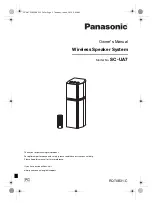
15
Material transfer
Benefits:
– Controlled, short-circuit-proof material transfer without
spatter
– Low thermal transfer due to low primary current
Disadvantages:
– Special units with large number of setting parameters
required
– Only shielding gases without or with low CO
2
content
Forces acting during material transfer
The amount of heat required to melt the wire electrode results
from arc power and resistance heat build-up in the free wire
end.
A number of forces come into play in the resulting drop forma-
tion and separation.
)
The main force components for separating the drops are
electromagnetic forces (pinch effect).
Welding parameters
Pulse period t
P
The pulse period for separating the drop should be between
1.5 and 3.0 ms depending on wire diameter and the pulse cur-
rent setting I
P
.
If the pulse period is too long, material transfer only takes
place during the pulse phase.
Arc formation and drop rate can be affected by additional
pulse stages.
Pulse voltage U
P
and pulse current I
P
Since welding with pulsed arc is based on the temporary uti-
lisation of the pinch effect, the drop-separating pulse current
must always be large enough to exceed critical current inten-
sity depending on wire diameter, wire material and shielding
gas composition, etc. If this value is not achieved, material
transfer takes place completely or partially in the short circuit
with possible spatter.
Wire feed speed v
D
and pulse frequency f
P
The main condition for a controlled material transfer with one
drop per pulse is to set a defined drop volume. The volume of
the melted drop must then be identical with the volume of the
wire electrode fed in each pulse period. The necessary wire
feed speed v
D
results from the product of pulse frequency f
P
and the wire length l melted in each pulse period. From this
relationship you see that a change in wire feed speed re-
quires a linear change in pulse frequency. A rise in electrode
melt rate by increasing wire feed speed therefore needs a
higher pulse frequency. The objective drop diameter should
be about 1.2 mm with a wire diameter of 1.2 mm.
Primary current
Arc length ionisation must be maintained during the primary
current phase, whose period results from the selected fre-
quency and pulse period. This requires currents ranging be-
tween 25 and 80 A depending on wire diameter, material and
material thickness. The primary current can also be used to
affect the arc and material transfer. At a constant ratio of wire
feed speed and pulse frequency, the arc length can be
changed by varying the primary current and the associated
voltage. Reducing the primary current causes a shorter arc.
This can be used to counteract arc deflection with fillet welds
or at high welding rates.
The time of drop separation can be affected by varying the ra-
tio of primary current to pulse current. Normally the objective
is to separate the drop just after the current pulse in the pri-
mary current phase (on the Saprom 900, in the third pulse
current phase). This can be achieved by increasing the prima-
ry current and reducing the pulse current at the same time.
Remember that excessively high primary current will melt the
free wire end too quickly. This will form very large drops which
can lead to spatter during the transition to the welding pool.
Electrostatic
Forces
Workpiece
Surface
tension S
Acceleration due
Electromagnetic force
F
L
(pinch effect)
Eddying forces
caused by
Forces of
repulsion (F
R
) of
evaporating
Force of inertia
Constrict drops
Viscosity
Wire electrode
to gravity
material
plasma flow
Содержание MULTIMIG 400puls
Страница 2: ...2 5 5 6 10 8 9 6 7 12 15 14 11 10 ...
Страница 19: ...19 Appendix mounting torch holder ...
Страница 20: ...326601 06 05 ...






































